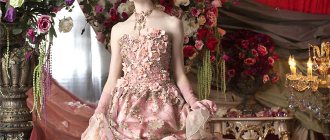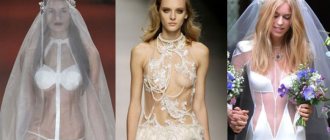The Caucasus is a unique region. In a small area bounded by mountains and the sea, about 60 nationalities live, each of which has its own origins, traditions, and language. For many centuries, ethnic groups interacted closely, forming unique common customs and ways of life. Like other peoples, the unique Caucasian flavor is especially evident in marriage traditions. A Caucasian wedding is a stunning, crowded celebration in its scope. Families who prefer to observe ancient traditions prepare for this important moment for years. Many customs today may seem strange. But each of them has a deep, sacred meaning.
Matchmaking in the Caucasus
The centuries-old traditions of the Caucasus assumed arranged marriages, and children were arranged at an early age, sometimes even in the cradle. The choice of a future bride for a boy fell entirely on the shoulders of parents and older relatives. Often the bride and groom did not see each other until their wedding night. The suitable girl was selected very carefully, according to a number of parameters:
- relationships between families, clans;
- the absence of blood feuds and insoluble conflicts that could drag on for many generations;
- the social status of both families: a girl from a rich, noble family will not be given to a groom from a poor family, the same applies to the misalliance of a wealthy young man with a girl without a dowry;
- the health of the future bride, the ability to bear and give birth to strong, numerous children;
- impeccable upbringing, availability of necessary life skills, respect for elders. The girl's external attractiveness was also taken into account.
Today, the custom of arranged marriages is very rarely observed. As a rule, young people find their match on their own, trying to marry for love. However, the blessings of older relatives, parents, and guardians are still crucial. It is rare that a marriage takes place without family approval.
Matchmaking in the Caucasus took place in several stages. This interesting custom, full of hidden meaning, is still observed today.
- When the arranged girl came of age, an envoy from the family of the future groom came to her parents' house. The older relatives agreed on what day to expect the matchmakers' visit.
- At the appointed time, matchmakers rode out on horseback from the house of the groom's parents. As a rule, they became respectable members of the family and society. They chose one of the older men of the clan, a person who belonged to the families that were going to become related, and a respected elder of the village.
- The matchmakers were greeted with kind words, seated at a table with refreshments, and engaged in an abstract conversation. At the end of the feast, representatives of the horseman asked the girl’s hand in marriage in traditional words. However, they did not receive consent on the first visit. The father or older relative took a break in order to consult with relatives and the girl herself, even if the young people had been talked into it since childhood.
- The second stage of matchmaking was more ambitious. The matchmakers were greeted cordially with plentiful treats. On both sides, the number of participants increased, other relatives joined. At the end of the feast, the matchmakers asked what decision the family made. The bride's father/guardian agreed to the marriage this time. In rare cases, a refusal followed with explanations of the reasons.
- Next, the families agreed on the date of the wedding. They agreed on who would take care of the organizational issues, preparing food, and expenses. The number of guests was confirmed.
Usually the bride was matched in the spring. Throughout the summer, families prepared for wedding celebrations, and in the fall, when the harvest was harvested, they held a wedding. Today there are no such strict frameworks; weddings are held mainly in the summer.
The stage of relatives getting to know each other or benefit
In the evening, the bride's relatives arrive with treats and a dowry, dyshchase. They are received and seated at tables, after which the stage of relatives getting to know each other begins.
It is worth noting that in early times the bride’s relatives were not present at the celebration, and the families were introduced on a separate day some time after the marriage.
In the modern world, close relatives of both parties are taken to a separate room for acquaintance. The eldest is seated at the head of the table, the eldest man from the groom’s side sits to his right, and the eldest man from the young girl’s side sits to his left. The man on the groom's side represents all relatives by last name and first name. Invited guests are brought gysh, a lamb dish, it consists of blagyu or shoulder blade, as well as the right side of the animal’s head, melyschkhye.
The oldest guest has the right to cut the head. Moreover, there is a strict procedure for dividing animal parts between guests:
- the ear goes to the schhyegyryt or the one who watches the table;
- the lower part to the one sitting on the left;
- half of the upper part - to the sitting person on the right.
He keeps the rest of the head for himself. Separately, it is worth mentioning about the person who takes care of the table. His responsibilities are not limited to a narrow range of actions; his powers are much broader. First of all, this is the youngest representative of the clan. At the end of the celebration, a small round table is placed, which is called Adyghe Iene l'akuisch. It has three legs and is placed in front of the gate of the bride's courtyard. The elders must conclude the ceremony with three toasts.
Ancient wedding customs in the Caucasus
A wedding in the Caucasus is celebrated for 3-7 days, and has its own, unique flavor. The culture of the Caucasian peoples is reflected in the celebration of the most important day in the life of every person. What unique features can be seen at such a wedding?
- Previously, the celebration took place without the participation of young people. The bride and groom remained in the rooms designated for them and did not see each other until their wedding night. Even the wedding itself was carried out with proxies from both families.
- Since the bride's parents were forbidden to attend the wedding in the groom's house, a double banquet was held - in the houses of the girl and the horseman. Moreover, men and women celebrated separately, in their own circle.
- The ritual of the bride's entry into the house of her future husband was strictly observed. To do this, the bride was wrapped in a thick veil, behind which her face was not visible. The canopy protected the girl from evil eyes and unkind spirits. She had to step through the threshold, covered with sheep's skin, with her right foot. A small ceramic saucer was placed under her foot, which she had to break with her heel. It was believed that the sound of broken dishes would drive away evil spirits, and that a sacrificial animal would bring prosperity and prosperity. In some nationalities, a lamb was slaughtered directly in the courtyard, before the bride entered the house, and its blood was smeared on the girl’s forehead.
- Upon entering the house, the bride received a spoonful of honey from her mother-in-law. The sweetness was supposed to soften the bitterness of parting with one’s family, to make further life in the new family prosperous and sweet. Also, wishing the girl fertility and prosperity, they showered her with sweets, coins, and rice.
- The spiritual ritual of hugs was considered important for a girl’s future family life. Before going to the room reserved for the newlyweds, the bride took in her arms the youngest child, a boy, in her husband’s family. It was believed that such contact ensures the birth of the first male child. Then she hugged the eldest woman in the family and all the other relatives of her husband according to seniority. This ritual created spiritual connections with a new relative.
- The gifts that members of two families gave each other at a wedding were strictly regulated by tradition. Thus, the bride had to show her skills as a housewife and needlewoman by presenting all the men of the new family with socks knitted with her own hands from threads spun by her.
- After all the rituals, the bride and groom were escorted to the bedroom, where they could see each other and get to know each other. It was believed that it was at this moment that a new family was born.
- The ritual of a young wife going out to a river or lake the morning after her wedding night is very interesting. According to legends, water spirits could carry young women into the pool when they came to a pond for water, if they were not intimidated. That is why the girl was accompanied by relatives. With songs and music they brought her to the river. Then the groom threw bread into the water. When, during the ritual, the merman swam to the bait, they shot at the bread, trying to hit it the first time. It was believed that a frightened merman would no longer encroach on a woman.
- Another custom that is gradually losing its position is bride kidnapping. If a girl for some reason refused the horseman, he could steal her. If a girl spent the night under the roof of someone else’s family, she was already considered “spoiled”, and she had no choice but to agree to a hated marriage. However, the theft of a girl rarely went unpunished: angry relatives took cruel revenge on the kidnappers.
The trends of the new time, more liberated and fast-paced, are gradually changing ancient rituals. For example, the tradition of separate celebrations for men and women is a thing of the past. On the contrary, a modern wedding is seen by young residents of the Caucasus as an opportunity to start a serious relationship. Guys, when meeting girls, shower them with flowery compliments, praising their unearthly beauty and grace, and present them with sweets. And girls, on the eve of their friend’s wedding, embroider scarves with their own hands and present them to their chosen ones as a sign of favor and hope for further relationships. If a girl, in response to courtship, did not give the treasured handkerchief, it means that her heart is occupied, or she is not ready to respond to the horseman’s feelings.
After the wedding
After the wedding, there is one interesting custom - it is called “elopement of the old lady.” The groom's grandmother leaves home, and the newlyweds must find her and bring her back. This shows their respect for their elders, and also that the old are always welcome under the shelter of the young.
All actions towards a woman should express maximum respect and care.
In this video there is a very beautiful Kabardian wedding:
Caucasian image of a bride
The closest attention is paid to the appearance, upbringing and character of the bride in the Caucasus. The chosen one must meet quite stringent requirements:
- modesty, respect for men and older women in the family;
- spiritual and physical innocence;
- excellent health;
- the ability to manage a household and do handicrafts.
A bride who fully meets the requirements is surrounded with warmth and care, she is revered as a kind of deity, because she is the mother of future heirs who will continue the family line.
For the wedding, the bride is dressed in a traditional white dress with rich gold and silver embroidery, sewn pearls, and a long belt that emphasizes her graceful waist. Some nationalities wear bright red wedding dresses. The bride's hair must be covered with a headdress: a national chukta cap, to which a veil is attached, or a multi-layered scarf. Rich embroidery on the cap, temple and forehead pendants, and necklaces are used as head decorations. The whole look of the girl emphasizes her airy beauty, grace, and slim figure. She is a jewel that one clan passes on to another, although the role of the bride in the traditional Caucasian wedding ritual is rather modest.
The bride at the wedding is required, first of all, to be modest. She should not laugh loudly, talk, get drunk, or stare at strangers. The girl practically doesn’t touch the treats. He dances only with the permission of his spouse and at the invitation of close male relatives. In addition, at a Caucasian wedding, newlyweds do not kiss. And jokes addressed to the bride are an insult to her entire family.
What are Caucasian weddings famous for?
- Caucasian dances at a wedding are an unforgettable sight. They excite the blood and fully reflect the fiery temperament of the highlanders, which is softened by the smooth, graceful movements of graceful women. At a traditional wedding, the newlyweds and guests always dance the Lezginka - a couple dance in which the man plays the role of a predatory eagle, and his chosen one becomes a gentle, faithful swan.
- Another characteristic feature of Caucasian holidays is flowery, verbose toasts, which always have a deep meaning. These are not just short phrases - these are poetic poems, instructive incidents from life, instructions for young people. In high style, the guests praise the virtues of the newlyweds, the strength and dexterity of the horseman, the wisdom and thriftiness of his young wife.
In the old days, all relatives and friends were invited to the wedding. Often the number of guests exceeded a thousand. No one was denied a place at the table, even if complete strangers came to the celebration. It was enough to give a gift to the young people and congratulate them with all my heart.
Men's suit
The Khadon (Ossetian) body shirt, tunic-shaped with wide sleeves, was made of chintz, satin, and cloth, and the festive shirt was made of silk. The trousers , made of dark cloth, tapered noticeably at the bottom, emphasizing the slenderness of the legs.
beshmet (Ossetian kurat , tight-fitting at the waist and greatly expanding at the bottom, had a blind fastener with small buttons and a stand-up collar. Among the Adyghe peoples, it was more often of dark colors: brown, green, blue, although sometimes it could be orange or made of checkered (striped) fabric. The festive option was a white beshmet with a black Circassian coat (and vice versa). Sometimes both clothes were black. The beshmet had morocco breast pockets on the left side. It was sewn on a lining or quilted to give it density.
Cherkesku (Karach. and Balkar. chepken ; Osset. tsukhyya ) - swinging outerwear with puffy sleeves in the 18th century. worn by the Caucasian nobility. Later, the cut of the Circassian coat became simpler and it came into widespread use not only in the Caucasus, but also in Russia.
Circassians were sewn from homespun cloth in natural colors - black, gray, brown and brown, as well as from dyed - dark red and dark brown. Among the nobility, white and beige colors were popular, which were festive for ordinary people. Many Ossetians lived much poorer than the Kabardians, so the Circassian coat was a luxury for them. They often did without it, the role of outerwear was played by the beshmet, the role of the beshmet by the shirt. The length of Circassian jackets varied from knee to ankle (the longest were worn by Kabardians at the beginning of the 20th century). A characteristic element of the highlander’s costume were gasyrnitsa - narrow cartridge pockets for gasyrs on a Circassian coat (until the mid-19th century, a measure of gunpowder was stored in them). Later, when cartridges were no longer carried in pockets, gazyrs became decorative ornaments, only imitating the cartridges placed in them. These “gazyrs” were made of bone, decorated with carvings and silver plates.
A man in a festive Circassian coat and a red cap; a woman wearing a captal and a cone-shaped headdress resembling a man's helmet
The burka is an ancient shoulder garment worn by shepherds and cattle breeders; in conditions of sharp temperature changes in the mountains, it became an integral part of the costume of the Caucasian highlanders. Shortened burqas were the capes of foot shepherds. Long burkas, like cloaks, protected not only horse riders, but also their horses from bad weather. In addition, they served as a bed for the shepherds. And the straight line of the shoulders of the burkas reflected the ideas of beauty of the proud inhabitants of the mountains. At the collar, the burqa was decorated with colored leather appliques and hammered silver clasps. A dagger in an embossed sheath on a silver belt was a source of pride and the most elegant and expensive addition to a Caucasian costume.
Hats . The brightest detail of the highlander’s costume, standing out with its whiteness against the dark background of the formal suit, was the bashlyk - a bag-shaped triangular hood with long string ends. It was made from cloth and thrown over a hat in bad weather. The caps also came in bright colors. Young people wore blue, crimson or orange hoods for the holidays. Ossetians preferred a red hood for a holiday. The top of the hood was laid out with a pattern of cords, applique and decorated with a silk tassel. In addition to bashlyks, typical headdresses of Caucasians were huge lambskin caps , astrakhan fur hats and felt hats .
Features of a modern wedding
Today, the bride and groom, in most cases, meet on their own. This could be a place of work or study, a holiday held together, for example, a friend’s wedding, or a recommendation from close relatives. Arranged marriages between complete strangers are, fortunately, a thing of the past.
Also, there is no strict time frame between the engagement/betrothal and the wedding. Sometimes a wedding is celebrated immediately if the financial condition of the bride and groom allows the celebration to be organized promptly. And in some cases, young people and their families spend years preparing for the big moment. The wedding may be postponed if the newlyweds need to finish their studies or save enough money for a crowded celebration.
A modern Caucasian wedding begins with a large motorcade of several dozen cars. Cars are decorated in every possible way, they drive loudly, with horns, songs, and shouts, as everyone around them should know about the happy wedding day. Carpet runners must be carried in one of the cars, since the bride should not walk on the ground.
The costumes of the bride and groom have also changed. National outfits gave way to the classic European style.
A Caucasian wedding is always an impressive, memorable event. Despite the trends of modern times, many families observe ancient customs. It is especially common to see traditional marriages in remote villages and auls, where the influence of elders and heads of clans is strong. Being present at such a wedding as a guest gives you an unforgettable, delightful experience that will last a lifetime.
Nechykhytkh stage or marriage registration
The very concept of “nikah” came to the language of Adygea from the Arabic dialect. The following persons are present during the marriage process:
- efenda or cleric;
- proxies from the bride and groom or uechyl;
- witnesses.
Everyone present must have a hat on their head during the ceremony, no matter what gender the guest is. Priests should ask trusted persons whether the newlyweds still agree to register the marriage. After receiving confirmation of intention from the young people, they should stand opposite each other and extend their hands on the right side. The palms should touch, but not completely except the thumbs. They should completely touch each other.
The priests clasp the newlyweds' thumbs from above. After the ritual, he must read a special prayer three times, each time, at the end asking the question “Are you getting married?” or “Are you giving away?” When they agree, they must answer “Married”, “Given”. Next, the minister reads a prayer, ending it with the word “Amen.” After which, everyone present should pray, raising their hands to the sky, to God.
Kabardian wedding: traditions, customs, modern interpretation
A Kabardian wedding is a joyful and spectacular event. Due to the fervor of the Kabardians themselves, disputes often break out at celebrations, developing into competitions, and sometimes even into very real conflicts. And all because traditional Kabardian matchmaking can last for more than one year, and all this time the passions around the future newlyweds are heating up and heating up. The groom's relatives, long before he decides to get married, look for a worthy girl for him. After that, commissioners were sent to the family of the prospective bride with a marriage proposal. If consent was obtained from the bride’s relatives, and according to customs this could take several months, the two clans began to conduct leisurely negotiations on the amount of bride price.
Wedding dresses of Caucasian brides from oligarch families
Have you ever been to a Caucasian wedding? We lost a lot. This noisy, fun, rich celebration is difficult to describe in words. By the way, the key words here are rich and fun. Even a family that is not very wealthy, by Caucasian standards, celebrates this event richly and magnificently; all relatives (and any Caucasian always has a lot of them) financially help arrange the parents of the bride and groom a luxurious celebration. And the bride's dress should also be rich and luxurious. If such beautiful and rich weddings are arranged for their children by Caucasians with average incomes, then the luxury of such celebrations by Caucasian oligarchs is something traditional. Huge wedding halls, tables laden with the most exquisite dishes in expensive dishes, a sea of flowers, a cake as tall as a man, hundreds of guests and relatives, famous show business stars - all this is a wedding where the bride or groom, and most often, both , from the richest Caucasian families. But there are no wedding troubles, or, God forbid, scandals at a wedding at such celebrations in the Caucasus; they highly respect centuries-old traditions, and wedding traditions in particular, and strictly maintain order at such a festive event. And of course, the bride’s dress is another indicator of the wealth of the newlyweds’ parents. We present to your attention information about the most expensive wedding dresses of Caucasian brides, their cost is a fortune, and the beauty of the bride’s outfit cannot be described in words, it needs to be seen. In such wedding dresses, Caucasian beauties look like real fairy-tale princesses.
Wedding dress of Mariam Bazhaeva
The wedding of the daughter of the president of the Alliance Group, Mariam Bazhaeva, and the son of a Chechen banker took place in April 2021. The luxury and splendor of this celebration is difficult to imagine and describe in words. The guests were entertained by Russian and national show business stars: Grigory Leps, the group “A, Studio”, Sharip Ukhmanov and others. The bride's dress is a real masterpiece of tailoring, both in luxury and in execution. It was designed and executed by a Lebanese couturier, the cost of the dress is about 20 million rubles.
Elina Bazhaeva's wedding dress
A little later, in September of the same year, the wedding of the second daughter of the Caucasian oligarch, Elina, took place. Her fiancé was the son of the famous Chechen businessman Mamakaev. The wedding was celebrated in Monaco, in one of the best restaurants in the world. This bride's wedding dress was in no way inferior in luxury to her older sister's dress. It was made by the same designer. Exclusive embroidery, lace and a beautiful long train of the dress, the bride looked like a Caucasian princess. Its cost was estimated at 20 million rubles.
Wedding dress of Khadija Uzhakhova
If billionaire Mikhail Gutseriev is organizing his son’s wedding, then all the most excellent epithets can be applied here: luxurious, brilliant, super-rich. The celebration took place in March 2016 and took place in two places, first in an expensive Moscow restaurant, which on the day of the celebration was turned into a real greenhouse filled with a wide variety of flowers. Foreign show business stars entertained the dear guests: Patricia Kaas, Jennifer Lopez, Sting, Iglesias. The guests also came from the highest Russian and national circles. The second stage of the wedding took place in England, in the London mansion of the Gutserievs, and this was already a wedding in true Ingush traditions. After the wedding celebration, the bride and groom rode through the streets of London in a golden carriage, accompanied by mounted police.
The wedding dress of the bride Khadija Uzhakhova, the bride of Mikhail Gutseriev’s son, was made (it’s not even customary to say “sewn” about such clothes) by the famous Lebanese fashion designer. A long train and a sea of precious stones, each of which was handcrafted into the material by the best craftswomen of the atelier. Suffice it to say that this dress of a Caucasian bride, due to the abundance of precious stones, weighed 25 kilograms and cost more than 2 million dollars. By the way, on the second day of the wedding, the bride changed her luxurious outfit to the national costume of a Caucasian bride, and she herself served the guests.
Wedding dress Lilith Markosyan
The wedding of the youngest son of the group’s president, Karapetyan, whose bride was Lilit Markosyan, took place in September 2021 and, in terms of luxury and the presence of star presenters and artists, was in no way inferior to other weddings of Caucasian oligarchs. The hosts were Andrei Malakhov, Nikolai Baskov and Ksenia Sobchak; Alla Pugacheva, Vera Brezhneva, Sergei Shnurov and other show business stars performed solo on stage. Among the invited guests were the President and Prime Minister of Armenia. The bride sported an expensive, luxurious dress, a real work of art by a Lebanese fashion designer (for some reason, most rich Caucasian brides prefer dresses from this couturier). Naturally, the dress was handmade, decorated with expensive lace, a scattering of precious stones, with a multi-meter train, costing about 25 million rubles. The bride's crown was also a work of jewelry and cost 5 million rubles.
Wedding dress Salome Kintsurashvilli
Armenian millionaire Samvel Karapetyan married his eldest son in June 2021. The oligarch's son's bride was his beloved Salome. As is usually customary among Caucasian oligarchs, the wedding was graced with their presence, and famous Russian and foreign stars, Pugacheva, Brezhnev, Leps and others, also entertained the guests with their creativity. What was unusual was that the wedding hall was not traditionally decorated with flowers, but was decorated in the style of a fairytale forest, based on the movie “Maleficent.” And Salome’s dress was not traditionally fluffy; the narrow, figure-hugging outfit ended with a fluffy, but not long, train. A diamond tiara shone on the bride's head. The cost of the dress was! 5 million rubles, the tiara cost almost the same, 13 million.
After the wedding
After the wedding, there is one interesting custom - it is called “elopement of the old lady.” The groom's grandmother leaves home, and the newlyweds must find her and bring her back. This shows their respect for their elders, and also that the old are always welcome under the shelter of the young.
All actions towards a woman should express maximum respect and care. In this video there is a very beautiful Kabardian wedding:
Organizing a wedding in accordance with Kabardian traditions is a long and labor-intensive task. But thanks to measured preparation, the whole action looks solemn and impressive. Would you be able to show as much endurance as the Kabardian youth, waiting for all the rituals to be observed?










